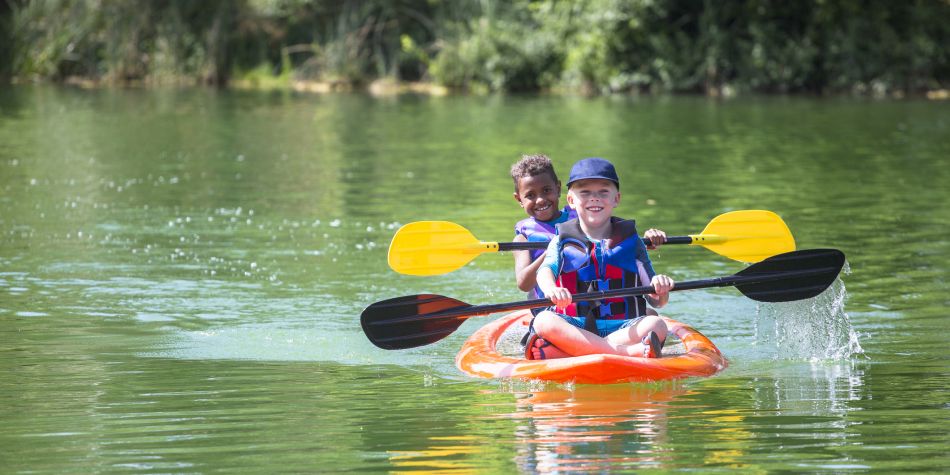
As these seemingly never-ending heat waves continue, it can feel like water activities are one of the few options we have to enjoy the outdoors without fear of heat illnesses. Poolside gatherings, lake days and water sports are ideal for staying cool and active. Trust us, we’re taking every chance we get to spend time in the water! But naturally, as we spend more time by and in the water, chances for drowning or other water-related accidents increase.
As we see families and friends flock to bodies of water, Parkridge Health is here to remind you to keep water safety top of mind.
Drowning and how to avoid it
It can take as little as 30 seconds, the time it takes to send a text or reapply sunscreen, for someone to drown. When it comes to water safety, every moment counts. Drowning is a leading cause of death for children, and it is the single most common cause of death among kids ages 1 – 4, says the CDC. And while children have the highest risk for drowning, no one is immune. Nearly 4,000 fatal drownings occur each year, including boating-related drownings.
So, no matter who you are or how experienced of a swimmer you might be, it’s always smart to brush up on proactive and reactive steps to prevent drowning-related injuries and deaths.
- Make sure every member of the family learns to swim — enough to be able to achieve water competency:
- Able to enter the water, take a breath, stay afloat, change position, swim a distance then safely exit the water
- Know the 3 Cs of supervision when playing with kids in and around water:
- Close — Your child is within an arm’s reach when around the water.
- Constant — Your attention should remain nonstop and uninterrupted; this means no reading, no phones and no distractions.
- Capable — The person supervising your children is a competent swimmer who is CPR certified.
- Teach children to always ask permission before going near water and ensure they know water is off-limits when alone
- Use the buddy system, and never swim alone
- Swim sober
- Know the signs of downing
- Learn how to call for help or safely assist someone who is drowning, such as “reach or throw, don’t go”
- Employ layers of protection:
- Use fences with locked gates, pool covers and other physical barriers to prevent unsupervised access to water
Lakes, rivers and water sports
In this region, we are fortunate to have a plethora of gorgeous, refreshing lakes, rivers and streams for recreational activities, boating and water sports. When taking advantage of these natural beauties, be sure to stay mindful of water safety tips.
- Ensure all lifejackets are U.S. Coast Guard-approved, suitable for the swimmer’s size and weight and appropriate for the water activity or sport.
- Take a boating safety course.
- Children and weak swimmers should always wear a lifejacket in and around the water.
- Anyone who is boating, paddling or participating in any water sports should wear a lifejacket, regardless of how well they swim.
- Do not dive into the water. Submerged rocks, trees and debris are always a hidden threat.
- Avoid alcohol when boating, swimming or supervising others.
- Know the local weather and forecast before enjoying your day. Changes in weather can occur incredibly quickly, especially in the summer months.
- Learn how to escape a rip current.
- Check for warning signs of unclean or contaminated water to avoid swimming-related illnesses.
Remember, you are responsible for your safety and the safety of your loved ones. Simple proactive steps can mean the difference between a refreshing day outside and a trip to the emergency room. Parkridge Health wishes you a summer filled with laughter and memories. If you find yourself in need of medical treatment, find a fast Parkridge Health facility near you or call our free, 24/7 Ask-a-Nurse hotline.
$webqFacilityNumber
Need a Physician?